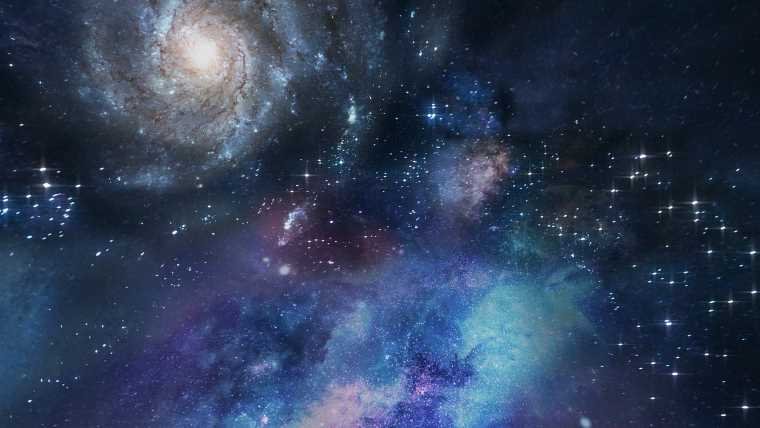A mysterious brightness at the cosmic dawn of time that left physicists so baffled they reconsidered the standard cosmological model may finally have been solved. New simulations indicate that less massive galaxies can glow just as bright as larger galaxies due to bursts of star formation.
First Images from James Webb Create Immediate Controversy
The issue first arose when the newly deployed James Webb Space Telescope (JWST) captured its first images of the earliest galaxies in the universe, and they appeared significantly brighter than predicted. In fact, they were too bright to be as young as they were.
This result caused physicists to reconsider the entire cosmological model since galaxies this young should not be this massive. Now, these new simulations indicate that the standard model is likely still correct and the real culprit behind the mysterious brightness in excessive light caused by bursts of star formations.
“The discovery of these galaxies was a big surprise because they were substantially brighter than anticipated,” said Claude-André Faucher-Giguère, an associate professor of physics and astronomy at Northwestern and the study’s senior author. “Typically, a galaxy is bright because it’s big. But because these galaxies formed at cosmic dawn, not enough time has passed since the Big Bang.”
In effect, there simply isn’t enough time for galaxies to become this large and be this young at the same time. One or the other had to be wrong, and whichever it was, the answer could challenge everything physicists thought they knew about the earliest years of the galaxy’s formation.
This led the Northwestern research team to create entirely new cosmic dawn simulations that could account for the excessive mysterious brightness of early galaxies while simultaneously preserving the fundamental physics that dictate how fast galaxies can grow. According to the press release, these simulations, which are part of the Feedback of Relativistic Environments (FIRE) project, “combine astrophysical theory and advanced algorithms to model galaxy formation.”
“The key is to reproduce a sufficient amount of light in a system within a short amount of time,” said researcher Guochao Sun, a postdoctoral fellow at Northwestern and the lead author of the study. “That can happen either because the system is really massive or because it has the ability to produce a lot of light quickly.”
After programming their simulations, the team says the result was a success, with a new theory about the excessive brightness and its origins that fit all of the parameters rising to the surface.
“Our simulations show that galaxies have no problem forming this brightness by cosmic dawn,” said Faucher-Giguère. The key to producing sufficient amount of light in a sufficient time was likely brilliant bursts of star formations.
“A system doesn’t need to be that massive,” said Guochao Son. “If star formation happens in bursts, it will emit flashes of light. That is why we see several very bright galaxies.”
Irregular Bursts of Star Formation Likely Caused Mysterious Brightness at Cosmic Dawn
The results are still just simulations, and more data is likely needed to confirm his hypothesis. Fortunately, the JWST is the first tool in human history capable of peering this far back in time.
“The JWST brought us a lot of knowledge about cosmic dawn,” Sun said. “Prior to JWST, most of our knowledge about the early universe was speculation based on data from very few sources. With the huge increase in observing power, we can see physical details about the galaxies and use that solid observational evidence to study the physics to understand what’s happening.”
Ultimately, the researchers are optimistic, particularly since their solution answers the mysterious brightness question in a relatively straightforward way, something much more palatable to physicists and cosmologists than a complete rewrite of the standard model of cosmology.
“Most of the light in a galaxy comes from the most massive stars,” Faucher-Giguère said. “Because more massive stars burn at a higher speed, they are shorter lived. They rapidly use up their fuel in nuclear reactions. So, the brightness of a galaxy is more directly related to how many stars it has formed in the last few million years than the mass of the galaxy as a whole.”
Christopher Plain is a Science Fiction and Fantasy novelist and Head Science Writer at The Debrief. Follow and connect with him on X, learn about his books at plainfiction.com, or email him directly at christopher@thedebrief.org.

